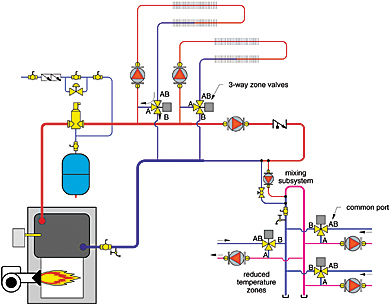The expansion tank needs to be pre-charged with air to the intended system pressure. If it leaks air the available expansion volume diminishes. It's not possible to accurately measure or check the amount pre-charge while fully plumbed into a pressurized system. If it's possible to isolate the tank from the system with valves, unscrewing it enough to allow water to escape, equalizing the pressure from the water side to the air side of the tank can work, or removing it fully. If the tank has failed internally water will dribble out of the air valve if you poke it with something to open it.
When the system is cool/tepid, the system pressure should be 12-15 psi for a boiler installed in the basement, unless it's a fairly tall building. What pressure does yours indicate when it's cool?
Another common cause of this symptom is a seeping auto-fill valve (aka pressure reducing valve) slowly overfilling the system causing the pressure rise over days/weeks.
The volume of cast iron baseboards isn't large, not dramatically more than cheap fin-tube, but some. If by "wall radiators" you mean something like an Arco SunRad or
Burnham Radiant installed inset into a wall, they run about 0.15 gallons for every 2.25" (the width of an individual section.) Using standard
plumbing volume tables, try to get a reasonably good estimate the total water volume of the system before up-sizing the tank. I suspect upsizing it not really needed here.
< Arco SunRad
Burnham radiant
With the water volume and the water temperatures and pressures you can use
Amtrol's handy web calculator to see if you're close to the margin for a 30 psi pressure relief valve with the existing expansion tank.




